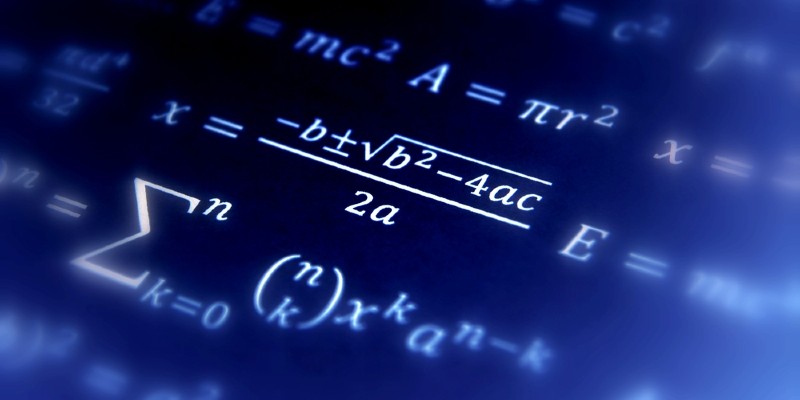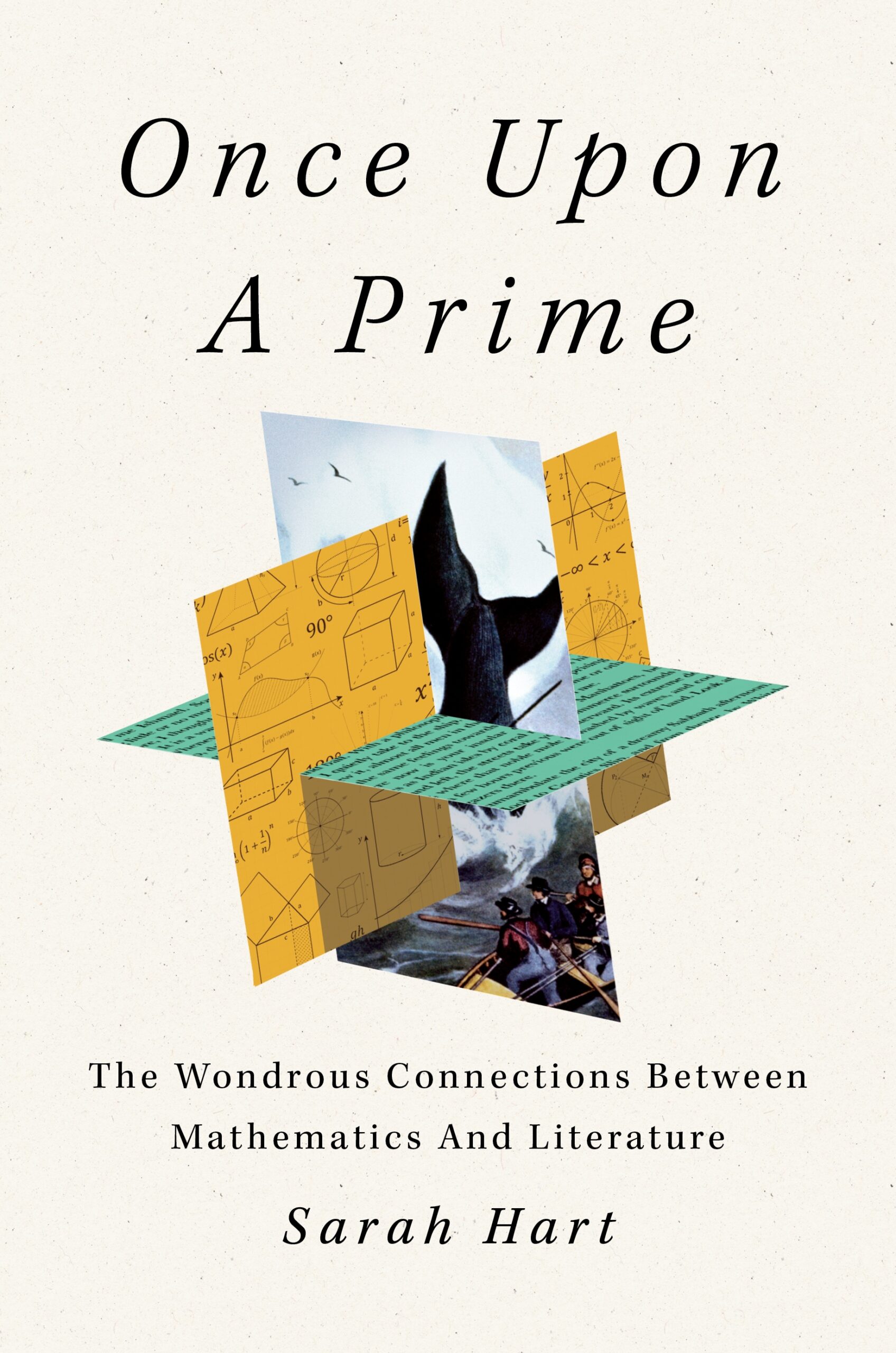The Patterns of Poetry: On the Mathematical and Poetic Value of Numbers

The connections between mathematics and poetry are profound. But they begin with something very simple: the reassuring rhythm of counting. The pattern of the numbers 1, 2, 3, 4, 5 appeals to young children as much as the rhymes we sing with them (“Once I caught a fish alive”). When we move on from nursery rhymes, we satisfy our yearning for structure in the rhyme schemes and meter of more sophisticated forms of poetry, from the rhythmic pulse of iambic pentameter to the complex structure of poetic forms like the sestina and the villanelle. The mathematics behind these and other forms of poetic constraint is deep and fascinating. I’ll share it with you in this chapter.
Think of the nursery rhymes of your childhood. I bet you can still remember the words. That’s the power of pattern—our mathematical brains delight in it. The subliminal counting of rhythm and rhyme feels so natural that it helps us remember, hence the oral tradition of poems telling the deeds of great heroes. Many traditional rhymes involve counting up cumulatively, adding a new line with each verse and counting back down to one every time.
There’s an old English folk song, “Green Grow the Rushes, O,” which builds up to twelve—the last line of every verse is the melancholy “One is one and all alone and ever more shall be so.” Meanwhile, the Hebrew Echad Mi Yodea (“Who Knows One”) rhyme, traditionally sung on Passover, uses rhythm and counting to teach children important aspects of the Jewish faith. It ends with “four are the matriarchs, three are the patriarchs, two are the tablets of the covenant, One is our God, in heaven and on earth.”
The goal of both is beauty, a beauty that makes a virtue of economy of expression.There are many mathematical mnemonics that we may have learned at school for remembering things like the first few digits of π. “How I wish I could calculate pi”: that’s not me expressing a desire to calculate π, it’s the mnemonic. The number of letters in each word tells you the next number in the decimal, which begins 3.141592. If you need more digits, a longer mnemonic is “How I need a drink, alcoholic in nature, after the heavy lectures involving quantum mechanics!” That one has been around for at least a century and is credited to the English physicist James Jeans. In fact, it’s now a niche hobby to compose verse in “pilish,” in which the word lengths are defined by the digits of π. 1 My favorite example of this is “Near a Raven,” a pilish version of Edgar Allan Poe’s “The Raven,” by Michael Keith:
Poe, E.
Near a Raven
Midnights so dreary, tired and weary.
Silently pondering volumes extolling all by-now obsolete lore.
During my rather long nap—the weirdest tap!
An ominous vibrating sound disturbing my chamber’s
antedoor.
“This,” I whispered quietly, “I ignore.”
There’s no need to learn this poem in its entirety, though—it’s been estimated that a mere forty digits of π are enough to calculate the circumference of the entire known universe accurate to less than the size of a hydrogen atom. So the first verse alone is more than enough for all practical purposes.
The pilish “Raven” is based on a mathematical constant, but its contents aren’t mathematical. There is, however, at least one well-known poem that poses a mathematical puzzle. You may know it:
As I was going to St. Ives,
I met a man with seven wives.
Each wife had seven sacks,
Each sack had seven cats,
Each cat had seven kits.
Kits, cats, sacks, and wives,
How many were going to St. Ives?
I remember trying to multiply all those sevens as a kid—only to realize I’d fallen for the oldest misdirection trick in the book.
Much more sophisticated mathematical problems have been expressed in verse, though. As I mentioned in the introduction, it was the standard format for mathematics in the Sanskrit tradition. The twelfth-century Indian mathematician and poet Bhaskara wrote all his mathematical works in verse. Here is one of the poems in a book he dedicated to his daughter Lilavati:
Out of a swarm of bees, one fifth part settled on a blossom of
Kadamba,
and one third on a flower of Silindhri;
three times the difference of those numbers flew to the bloom
of a Kutaja.
One bee, which remained, hovered and flew about in the air,
allured at the same moment by the pleasing fragrance of
jasmine and pandanus.
Tell me, charming woman, the number of bees.
What a lovely way to write about algebra!
We don’t tend to write our mathematics in verse nowadays, more’s the pity, but the aesthetic link with poetry remains: the goal of both is beauty, a beauty that makes a virtue of economy of expression. Poets and mathematicians alike have praised each other’s specialisms. “Euclid alone has looked on Beauty bare,” wrote the American poet Edna St. Vincent Millay in a 1922 sonnet paying homage to Euclid’s geometry.
For the Irish mathematician William Rowan Hamilton, both mathematics and poetry can “lift the mind above the dull stir of Earth.” Einstein is reported to have said that mathematics is the poetry of logical thought. A mathematical proof, for example, if it’s any good, has a lot in common with a poem. In both cases, each word matters, there are no superfluous words, and the goal is to express an entire idea in a self-contained, usually fairly short, and fairly structured way.
I’m going to show you a proof now, because it’s a beautiful thing and it is pure poetry. It’s the proof, attributed to Euclid (though we don’t really know who came up with it), that there are infinitely many prime numbers. Remember, primes are the numbers, like 2, 3, 5, 7, and so on, that can’t be divided up into smaller whole number parts. The number 4, for instance, isn’t prime because you can break it up as 2 × 2. And 6 is 2 × 3.
The elegant brevity of a mathematical expression, just like a poem, can encompass multiple layers of meaning.Every one of the counting numbers after 1 is either a prime number or can be broken up (the technical term is “factorized”) into prime numbers, and even more brilliantly, this can be done in really only one way, as long as you are happy to say that 2 × 3 is basically the same thing as 3 × 2. By the way, the number 1 feels as if it ought to be prime because it can’t be divided up, but we exclude 1 from the list because otherwise you’d have to say that 6 = 1× 2 × 3 = 1× 1× 2 × 3 = 1× 1× 1× 2 × 3 =…and there would be infinitely many ways to factorize every number—yuck! We get around this by defining a prime number as a number greater than 1 whose only factors are 1 and itself.
Understanding the prime numbers is as important to math as understanding the chemical elements in science, because just as every chemical substance is made up of a precise combination of elements (every molecule of water, or H2 O, has exactly two hydrogen atoms and one oxygen atom, for instance), every whole number has a particular prime decomposition. One of the most exciting discoveries of early mathematics was that, unlike chemical elements, the prime numbers go on forever. Actually, at the time, the contrast would have been even more stark, because for the ancient Greeks there were just four elements—earth, air, fire, and water—that were believed to make up all things.
Here’s a proof that there are infinitely many prime numbers:
What if we had a list of all primes, a finite list?
It would start with 2, then 3, then 5.
We could multiply all the primes together, and add 1 to make a
new number.
The number is 2 times something plus 1, so 2 can’t divide it.
The number is 3 times something plus 1, so 3 can’t divide it.
The number is 5 times something plus 1, so 5 can’t divide it.
None of the primes on our list can divide it.
Either our number is prime, or a new prime not on our list
divides it.
Either way, the list isn’t complete. It can’t be done.
There can’t be a finite number of primes.
QED
It’s a poem, I tell you!
The resonances between poetry and mathematics were expressed well by the American poet Ezra Pound in The Spirit of Romance (1910): “Poetry is a sort of inspired mathematics, which gives us equations, not for abstract figures, triangles, spheres and the like, but equations for the human emotions.” Pound made another analogy between mathematics and poetry—the way that both can be open to many layers of interpretation. I would say that mathematicians have a very similar understanding of what makes the greatest mathematics: concepts that hold within them many possible interpretations—structures that can be found in different settings and so have a universality to them.
The key thing here is that the elegant brevity of a mathematical expression, just like a poem, can encompass multiple layers of meaning, and the more layers and interpretations it can contain, the greater the artistry. Mathematics, like Walt Whitman, contains multitudes, both literally and allegorically. The only difference is that we hope it does not contradict itself!
__________________________________

Excerpted from Once Upon a Prime: The Wondrous Connections Between Mathematics and Literature by Sarah Hart. Copyright © 2023. Available from Flatiron Books, an imprint of Macmillan, Inc.
